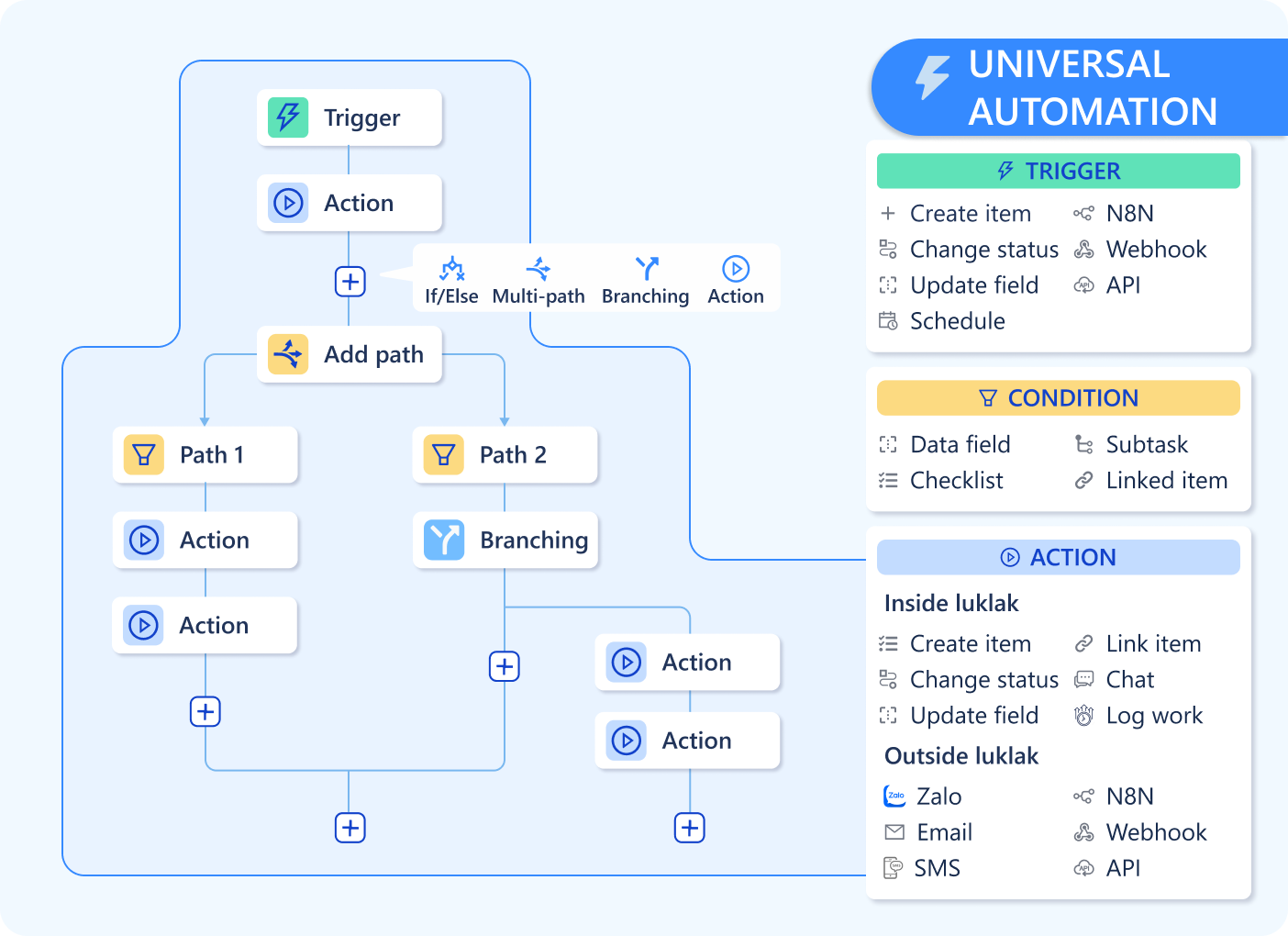Why Universal Automation Matters

Function triggering a project kick-off in your Operations Function—without ever leaving the platform.
The Core Principle: Trigger → Condition → Action
Every automation rule in Luklak, from the simplest to the most complex, follows a simple, logical pattern:1. Trigger
The event that starts the automation. This could be an
🧊 Object being created, a field being updated, a specific time of day, or an incoming signal from another app.2. Condition
The logical check that determines if the automation should proceed. It acts as a smart filter, ensuring the rule only runs when your specific criteria are met.
3. Action
The work that the automation performs. This can be anything from updating a field and sending a message to creating a new
🧊 Object or calling an external system.What’s Next?
You now understand the core concepts of Universal Automation. It’s time to dive into the details of how to build your digital workforce, piece by piece.- Start with the fundamentals: The Trigger-Condition-Action Model
- Learn what starts a rule: Trigger Types
- Add logic to your rules: Building Conditions with UQL
- See what’s possible: Action Types
- Use dynamic data in your actions: A Guide to Smart Values
- Ensure your rules are reliable: Execution & Debugging